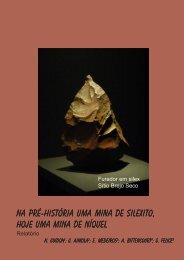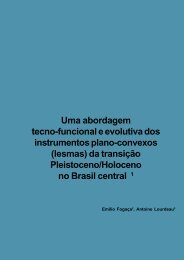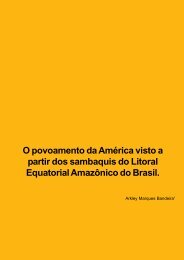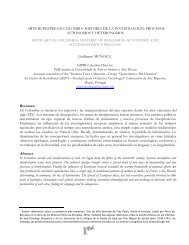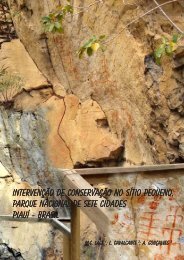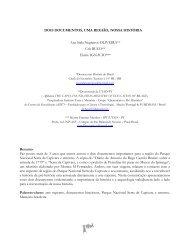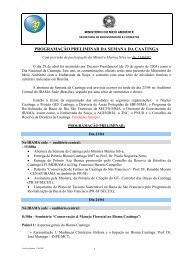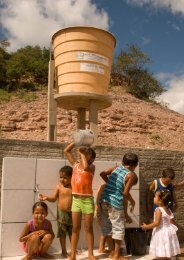Untitled - Fundação Museu do Homem Americano
Untitled - Fundação Museu do Homem Americano
Untitled - Fundação Museu do Homem Americano
You also want an ePaper? Increase the reach of your titles
YUMPU automatically turns print PDFs into web optimized ePapers that Google loves.
7 - Permanência da forma pintada?<br />
Permanency of the Painted Form?<br />
Persistence de la forme peinte?<br />
Permanencia de la forma pintada?<br />
Coordena<strong>do</strong> por / Coordinated by: George Nash & Hipólito Colla<strong>do</strong> Giral<strong>do</strong><br />
PAPERS<br />
Permanency, Painting And Protocol: What The Painted Form Meant To Spanish Levantine<br />
Artists<br />
George Nash, Reino Uni<strong>do</strong><br />
40<br />
Within south-western corner of Continental Europe is a unique painted rock-art resource, usually referred<br />
to as the Paintings of the Spanish Levant. This vibrant repertoire includes mainly hunting scenes involving<br />
bulls, reed deer and wild boar. Other narratives involve honey collecting, dancing/chanting, execution,<br />
single combat and warring scenes. In many respects this rock-art assemblage truly respects the many<br />
ritual and special aspects of prehistoric life. The dating of these images is still controversial with many<br />
scholars [recently] claiming that these clear hunter/gatherer figures are in fact Neolithic.<br />
In many cases there is clear evidence of intentional design prior to painting and in the form of charcoal<br />
outlines. There is also clear evidence of over-painting (or retouching); one site having at least seventeen<br />
re-touches over the original image and using a variety of colour pigments. It is probable that this activity<br />
involved many site visits and that maintenance and enhancement of the rock-art was an important activity.<br />
Furthermore, the permanency of each design suggests that the image remained an essential icon over<br />
many years. Interestingly there is very little evidence of defacement or obliteration over this long period<br />
of time and it is not until the coming of the Romans that the antisocial activities of graffiti superimposition<br />
begin.<br />
This paper will explore some of the issues and protocols associated with an art form that remained on<br />
the rock-shelter walls for at least 5,000 years and discuss the mindset of those artists who considered<br />
the permanency of their compositions.<br />
Permanence Or Spatial Exclusion Of The Painted Form? The Case Of Site Valle El Encanto,<br />
Semiarid Northern Chile<br />
Andrés Troncoso, Chile<br />
The presence of paintings at the site Valle El Encanto located in the Semiarid north of Chile is discussed.<br />
At this site, nine open-air panels with rock paintings are recognized and these are associated with huntergatherer<br />
societies from the Late Archaic period (ca. 2000 cal BC – 0). A further 60 engravings depicting<br />
pottery producer societies from different periods are also present (dating to c. AD 1540).<br />
Through a study concerned with the location of the rock-art panels as well as their spatial distribution,<br />
two basic issues are discussed: firstly, the logics that guided the location of the art and the use of the<br />
topography of the rock surface to allow their survival and secondly, how the permanence of the paintings<br />
was ignored and/or not interfered with by later groups, who did not paint or carve images at this site.<br />
Despite the permanence of the painted form and considering that it can be added to, altered or even<br />
obliterated, why were these images left alone. Moreover, was there significance in an ancestral history<br />
whereby rock-art becomes a sacred device not to be interfered with?<br />
Permanency of the Painted Form? Canadian Shield rock art: permanency of sacred meaning<br />
Dagmara Zawadzka, Canadá<br />
Sem resumo<br />
FUMDHAMentos IX




